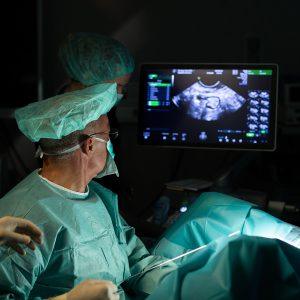Published in Donald School Journal of Ultrasound in Obstetrics and Gynecology
Abstract
Dysfunctional implantation and the formation of the placenta can endanger life and health of both the fetus and the mother, during prenatal life and decades after delivery. The changes that lead to the insufficient implantation should be sought in the preimplantation period, in relation between the embryo and the endometrium. Prepregnancy approaches such as weight management, blood pressure and blood sugar control, smoking cessation, and optimization of the pregnancy interval may improve implantation and placentation, and lead to better pregnancy outcomes.
Gametes: The birefringence properties of the meiotic spindle and the zona pellucida are indicative of good health of the oocyte. Very useful data can be obtained from the application of studying gene expression from cumulus cells, using microarrays, as biomarkers for oocyte viability.
The metabolomic profiling of oocyte spent culture media by mass spectroscopy has shown differences related to oocyte maturation, embryo development and implantation success. Oocyte quality can be assessed by the measurement of oocyte oxygen consumption. The role of the number and function of mitochondria in the development of quality oocytes is surely very important. The correction of the gene signaling, or autologous tissue genetic bioengineering is certainly a step forward in obtaining the quality gametes. The stem cells can be influenced by the stem cell therapy in order to obtain the intracellular communication with existing ovarian primordial oogonia. The sperm chromatin and DNA integrity are necessary to ensure normal embryo development. Magnetic-activated cell sorting technology for sperm could improve obstetric and perinatal outcomes.
Embryo: The invasive technology means preimplantation genetic testing (PGT), the aneuploidy screening or diagnosis of specific genetic disorders of the embryo before the transfer by using next-generation sequencing (NGS). Noninvasive time-lapse embryo monitoring allows continuous embryo observation without the need to remove the embryo from optimal culturing conditions. Recently, the developed strategies including the genomic, transcriptomic, and proteomic approaches, have been applied in assisted reproduction. Their goal is to identify a “molecular profile” of embryo development by detecting the chemical components in the oocyte, granulosa cells, follicular fluid, and embryo culture medium.
Endometrium: The medical treatment with estrogens, vasodilators, sildenafil citrate has neither led to significant improvements of morphological parameters nor to the results in terms of increasing of implantation and reduction of the number of miscarriages. There have been reports of trials with immunoglobulins and anticoagulants in pregnancy complication prevention, as well as the intrauterine administration of autologous peripheral blood mononuclear cells (PBMCs), especially when pretreated with corticotropin-releasing hormone (CRH) that acts by regulating apoptosis of activated T-lymphocytes at the implantation site. The quality of endometrial thickness, implantation rate and pregnancy success, and the reduction of the complications, miscarriage rate, is attempted by flushing uterus cavity with autologous platelet-rich plasma (PRP) in preparation for the implantation during IVF process.






